When I was out in Kansas City at the Kauffman Foundation’s Economic Bloggers Forum, Mish Shedlock of the blog Global Economic Trend Analysis made a persuasive case that state and local finances were completely broken because gov’t workers were overpaid compared to the private sector. ( See here for one of his posts on the subject).
Mish got me thinking…So I decided to assemble some BLS data on the subject.
Not to mince words, here’s the payoff chart, that compares the benefits of state and local workers with private sector workers. (These figures are adjusted for inflation, and indexed to 2001I=100).
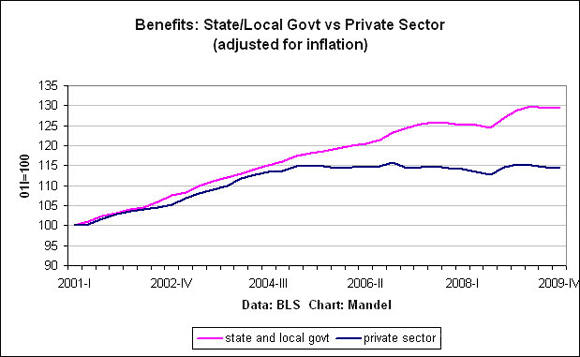
Yowza! Somewhere in 2004, the world changed, and we didn’t realize it. Employers in the private sector put a lid on the cost of benefits (which includes healthcare, retirement, vacation, and supplemental pay of all sorts). Meanwhile the cost of benefits in state and local govt jobs just kept rising, with barely any break, both before and after the financial bust. This is not good
To put it another way, the benefits gap between the public and private sectors has widened sharply since 2004.
(continues)
Let’s do a deep dive on benefits. First, though, let’s dispose of wages. While the benefits gap was increasing, the wage gap stayed roughly the same. In the chart below, real wages for state and local govts rise at roughly the same rate as the private sector.
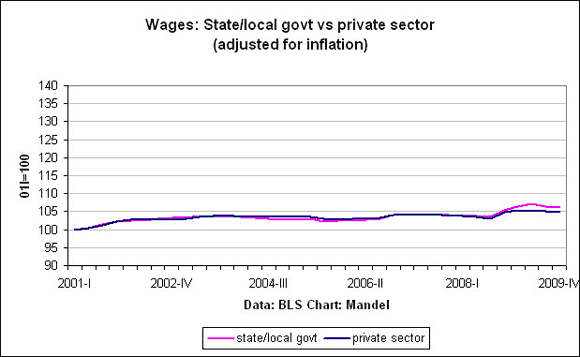
Now let’s take a look at the two biggest contributors to the benefits gap, health insurance and retirement/ savings. This chart shows the per hour cost to employers in the public and private sectors. For health insurance, state and local governments contribute $4.45 per employee hour, compared to only $2.01 in the private sector. The gap is even bigger for retirement and savings–$3.19 per hour in the public sector, more than triple the $0.92 in the private sector.
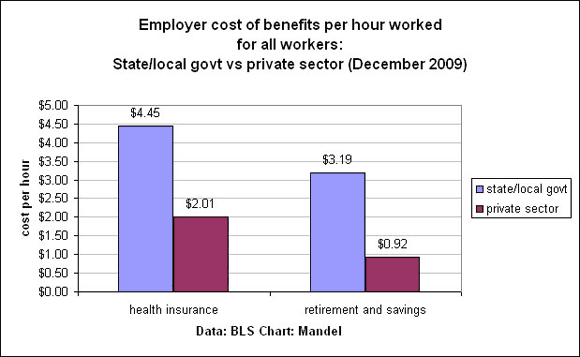
It’s possible that these numbers are biased because the occupational mix in state and local government is different than the private sector. So I focused down to managers and professionals.
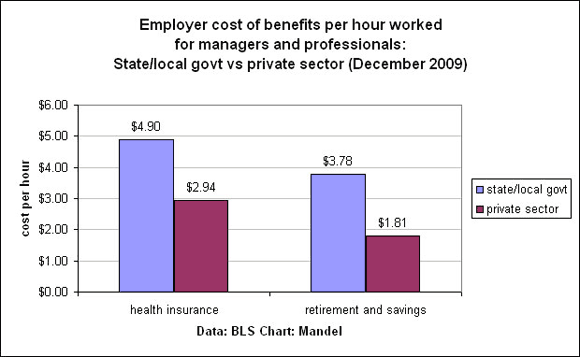
Not quite as bad, but state and local governments still provide a lot better benefits than the private sector. A public sector managerial or professional job has retirement benefits about twice that of a private sector managerial or professional position. And to the degree that public pension plans are underfunded, this difference actually understates the gap.
To round out the analysis, let’s look at the pattern of healthcare benefits and retirement benefits over the past five years.
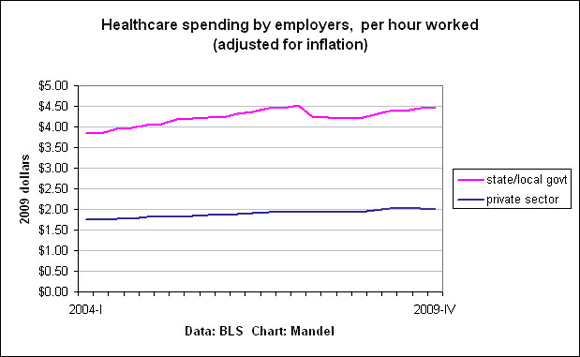
You can’t tell from this chart, but healthcare spending rises at roughly the same rate for both public and private sector. The story for retirement, though, is completely different.
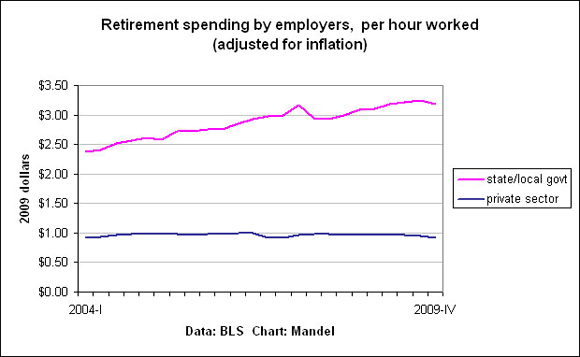
In the private sector, adjusted for inflation, employer spending on retirement benefits stagnated between 2004 and 2009. That’s right, just flat, even before the financial bust.
By comparison, state and local costs for retirement rose by 30% between 2004 and 2009, in real terms.
This cannot continue.
Disclaimer: This page contains affiliate links. If you choose to make a purchase after clicking a link, we may receive a commission at no additional cost to you. Thank you for your support!


Leave a Reply